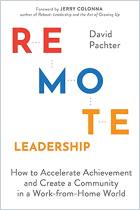Join getAbstract to access the summary!

Join getAbstract to access the summary!
Kevin Eikenberry and Wayne Turmel
The Long-Distance Leader
Rules for Remarkable Remote Leadership
Berrett-Koehler, 2018
What's inside?
Leaders can create solid relationships with long-distance workers.
Recommendation
The Project Management Institute reports that 90% of project teams now include one or, often, more workers who operate from different locations than their supervisors and teammates. Nearly 80% of managers now supervise a worker or workers at remote locations. Many leaders face isolation because their team members are far away. These “long-distance leaders” need to use a variety of tools specifically designed to address distance leadership issues and concerns. Kevin Eikenberry and Wayne Turmel’s comprehensive, research-based manual offers valuable insights for those who lead remote workers, including 19 rules for long-distance leaders.
Summary
About the Authors
Kevin Eikenberry is the chief potential officer at the Kevin Eikenberry Group. Wayne Turmel is a co-founder of the Remote Leadership Institute.























Comment on this summary